A D-18 GE vs. a 1936 D-18
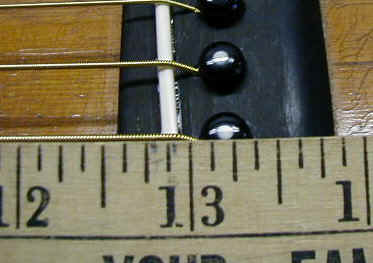 |
Here's a shot of saddle locations- the bass contact point is
indicated by the penciled line just past 12 7/8". The zero end of
this yardstick is resting right in the middle of the 12th fret and I
took these measurements from an actual guitar that actually played in
tune. The low E on this 36 intonates perfectly,
w/out resorting to a razor sharp rear edge. Now check out the location of the
GE's saddle. It's a little too far foward. Note also the location of the bridge pins.
The '36 is sitting right between 13 1/8 and 13 2/8, while the GE is just
barely behind the 1/8 mark. Not all GE's are this far off, but use this
as a check. |
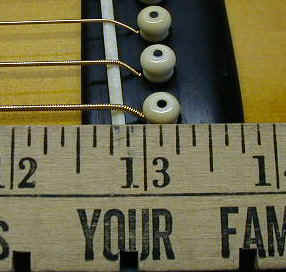 |
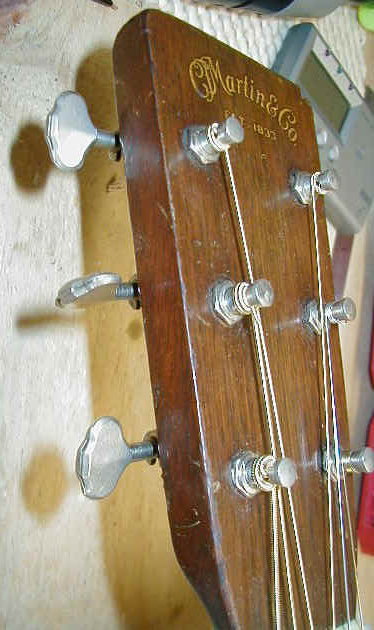 |
Here's a couple of shots of the headstocks. Notice the difference in the tuner
buttons. The GE has Waverlies, which are nice tuners, but lack the scalloped edges
of the real Grovers. Also notice the rounded tops of the Waverles, versus the flat
tops of the Grovers. The decals look pretty comparable.
[I'm informed that this '36 has non-original tuners that
probably were added in the 40's] |
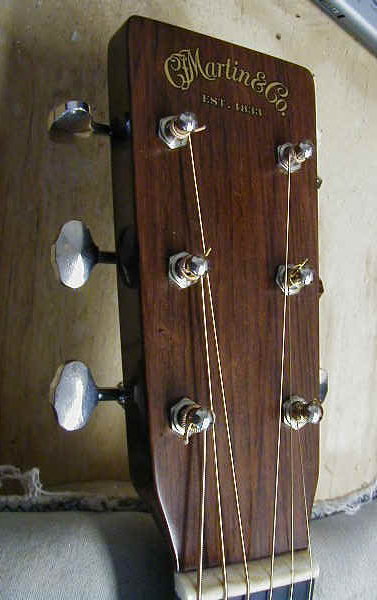 |
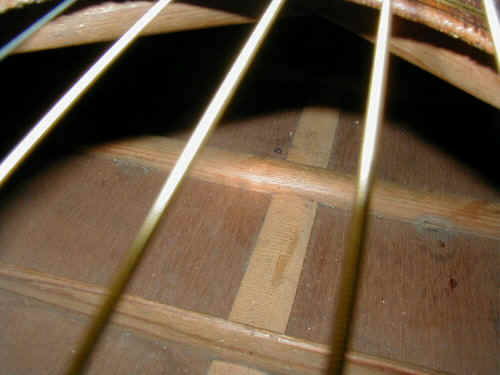 |
Interior shots: notice the low rounded back braces of the '36 versus the tall braces of
the GE. I've shaved the back braces down on the GE's and gotten a richer,
bassier sound. I wouldn't call this a "big deal", just pointing
out some differences. Paper label in the GE, of course. |
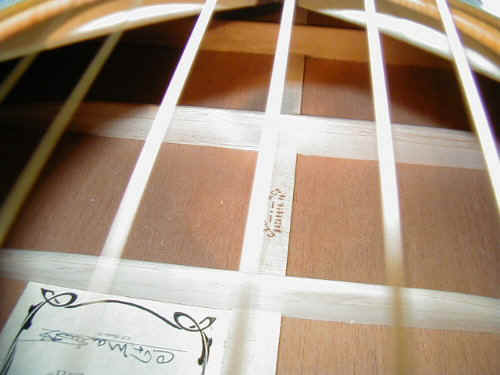 |
| |
This isn't a GE, but the GE has the same setup- wooden block
covering the truss rod nut. '36 has a non-adjustable T-bar. I'd
consider both of these to be "Good Things". The GE has a popsicle
brace, the '36 did not originally, but had a short brace added due to
damage. I'm not a big fan of the
popsicle. |
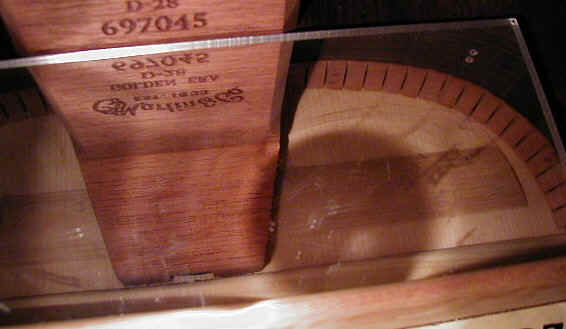 |
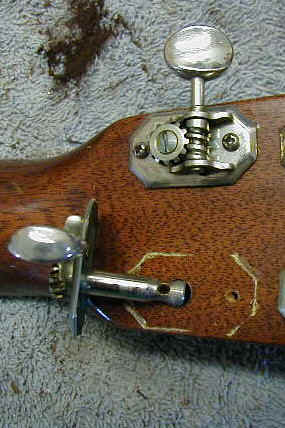 |
This is not the '36, but it shows the same thing- the tuner hole in
old Martins was drilled to fit the tuner shaft. On the GE, the
hole is larger and the shaft does not make contact with the peghead
wood. |
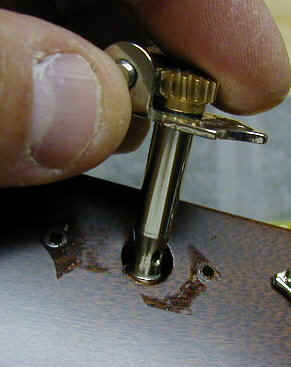 |
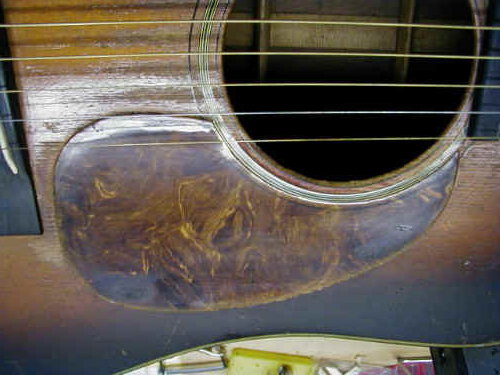 |
The '36 sure looks a lot browner in this picture! I'm not sure
if that's age or lighting. |
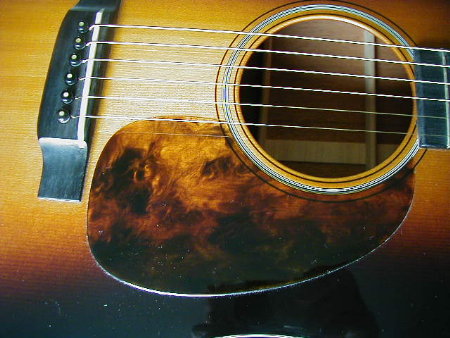 |
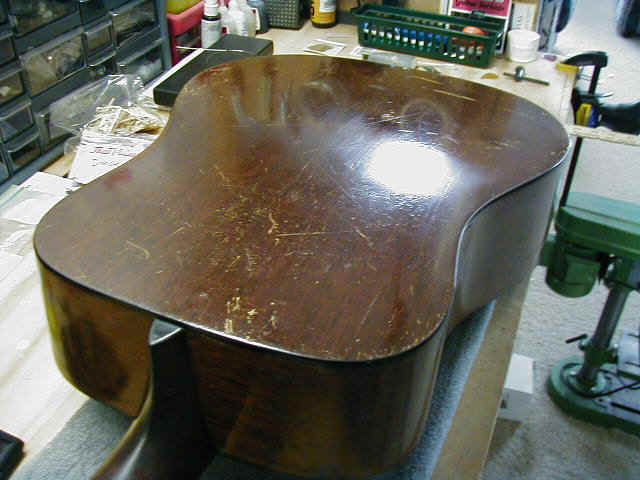 |
Not a whole to say here- the GE has an accurate looking backstrip
and the wood is certainly very nice. The '36 has been played a
little more! |
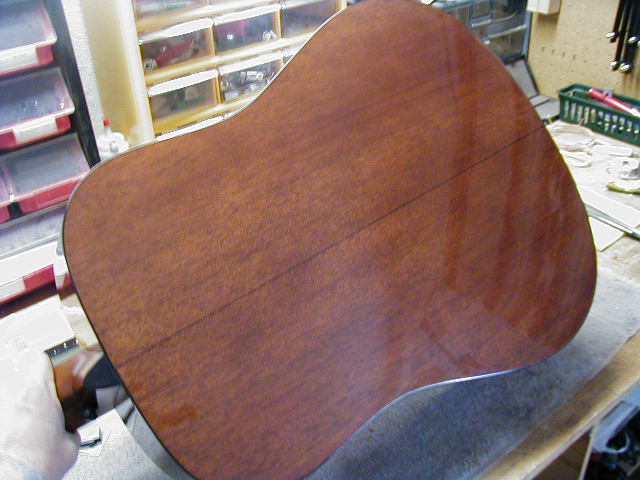 |
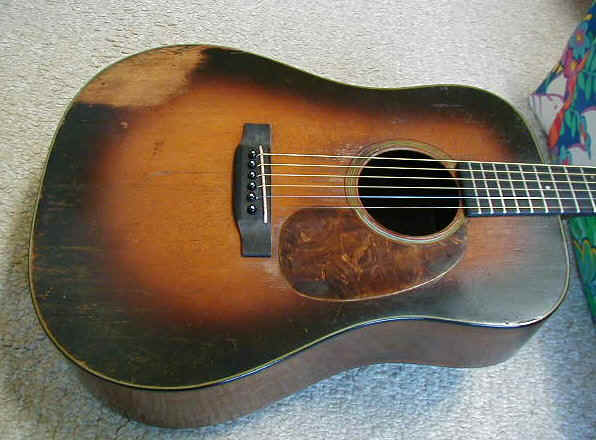 |
Same as above! The GE needs to be played for about 60 years.
There's more black on the GE, but that's probably just an individual
thing. |
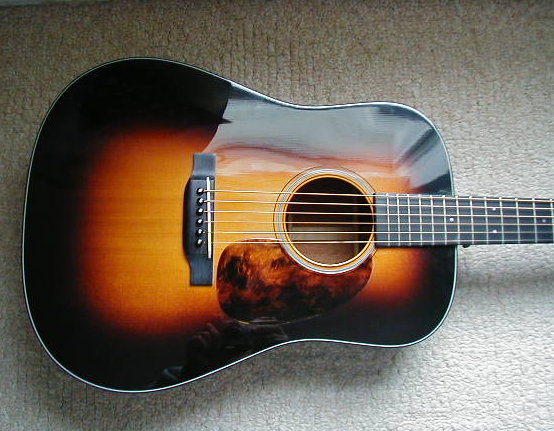 |
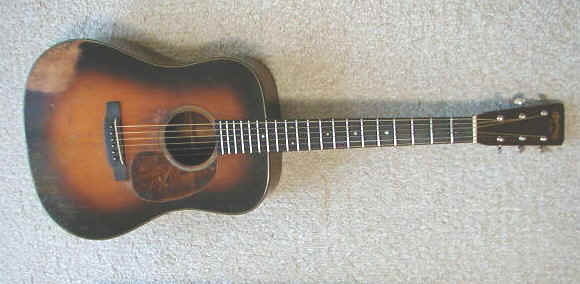 |
Overall shots. These show how similar the two guitars really look.
Up close, there's more red in the GE 'burst, but I suspect that will
fade out over time. |
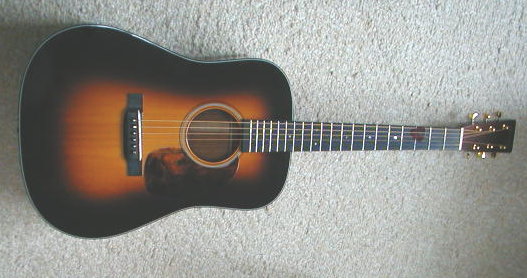 |
| |
|
|
Summary of main structural differences:
- AGE! This is probably by far the most important thing.
There's just nothing like 65 years of playing.
- Hide glue: the '36 was made with hide glue, the GE is made with PVA
glue. Hide glue dries brittle and PVA dries rubbery.
- Truss rod: the '36 has a very stiff, non-adjustable T-bar. The GE
has an adjustable rod. I'm for the adjustable rod, myself.
- Popsicle brace: the '36 did not originally have one but this particular
guitar has a smaller version. The GE originally had one, but this
particular guitar no longer does! Likewise with the truss rod nut
cover. '36- no, GE- yes. (and this GE still has the cover)
- Tuners: the '36 had open-back Grovers, the GE has open back Waverlies.
The Waverlies are great tuners.
- Tuner holes: the '36 tuner holes fit the shaft, the GE's holes are
larger.
- Back braces: the '36 has 2 tall and 2 short, the GE has 4 tall ones.
- Bridge pin holes: the '36 holes were slotted, the GE is not.
Go here for details
- Neck shape: variable in the 30's, consistent modified V on the GE.
That's about it. I'm not considering bridge pin, saddle, or nut
material because these are easily changed and very, very few old Martins still
have the original stuff anyway.
Overall conclusions? The GE series are decent copies of the originals.
There are many places where they differ, but many of these (back braces,
popsicle brace, pickguard, tuner holes, bridge pin holes, etc.) can easily be
modified to more match the originals. Earlier GE's sometimes had the
"triple-whammy" of a low action, high saddle, and lots of neck relief which made
it impossible to raise the action w/out giving the guitar an extremely tall
saddle. For the past 3 years or so, though, the GE's I've been getting in
for setup have had excellent geometry. Sound-wise I've found the GE's to be
pretty close to the originals, given that they don't have 60-ish years of
playing. We've A/B'ed modified GE's against prewars and have often
actually preferred the GE's in some cases. In those cases the old one
sounded dull and boomy while the GE had a crisp sparkle to the tone.
I
like the GE's a lot and the sunburst one in these photo is my
personal guitar. That's a pretty good recommendation, I think! On
mine (I had a natural, too) I run the stock ivory nut, a bone saddle for more
bite, and black water buffalo pins in a slotted bridge. I remove the
popsicle brace but leave the truss rod cover in place, shave the rear 2 back
braces, and plug the oversize tuner holes. I put a 30's style Tortis
pickguard on. And then I play!
Home











